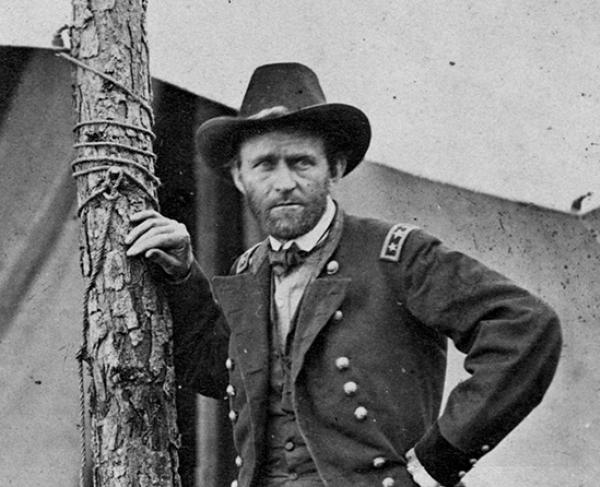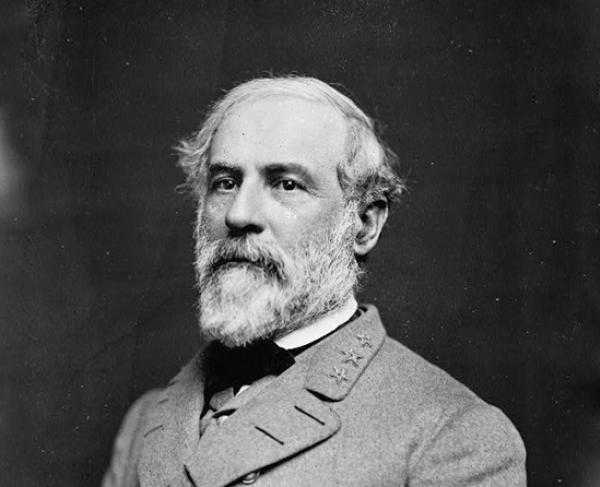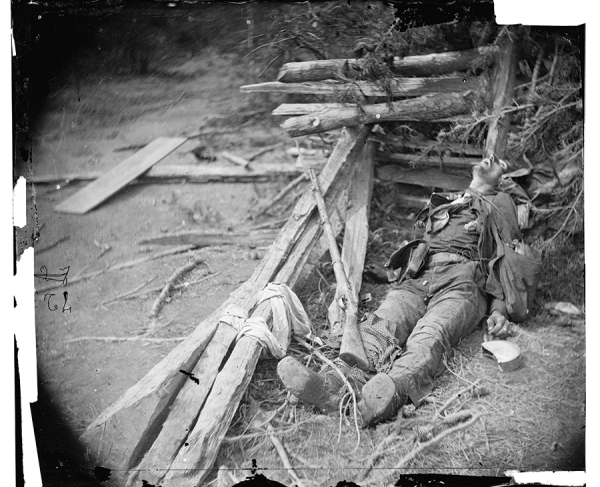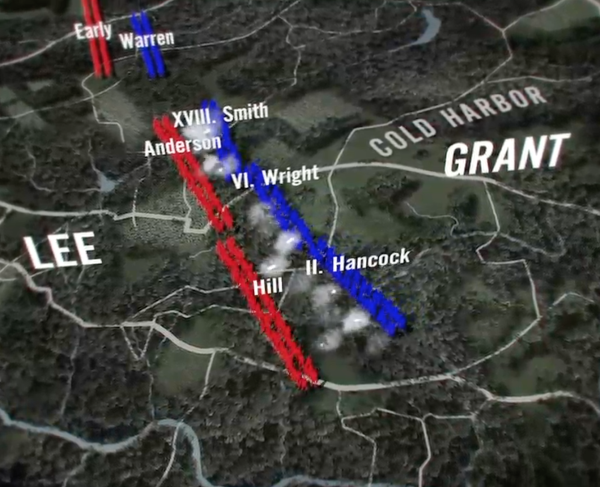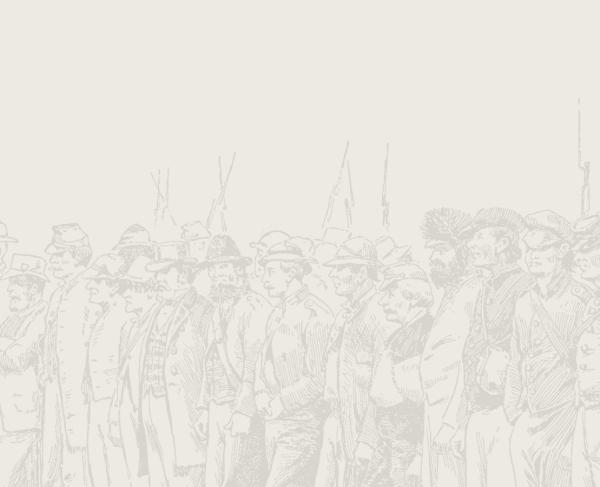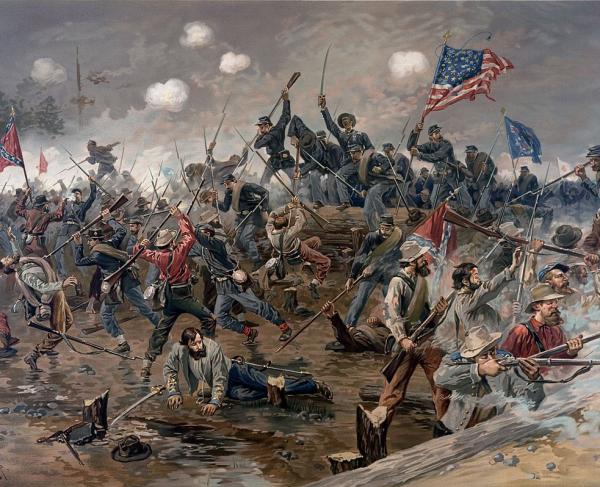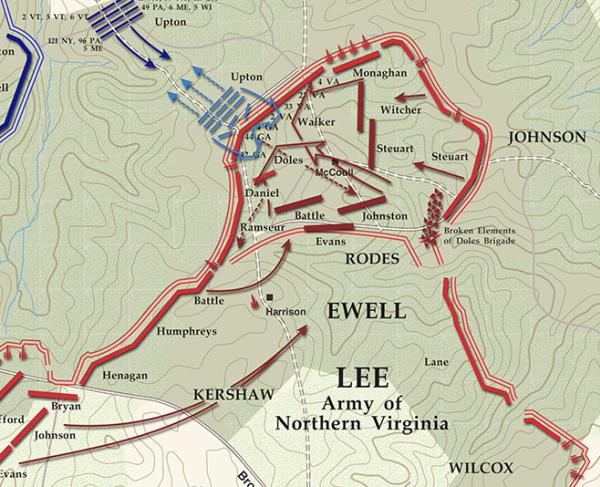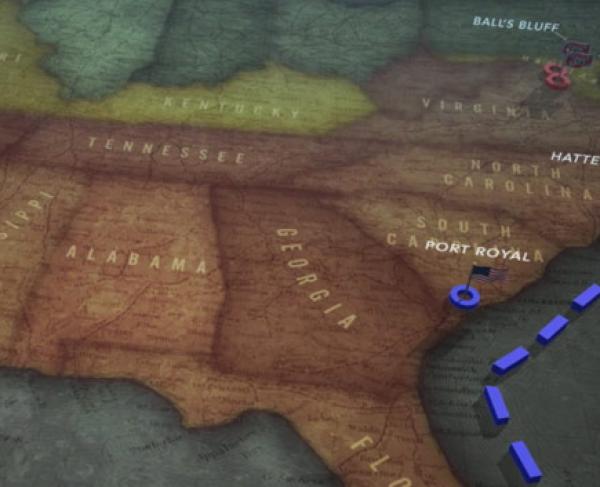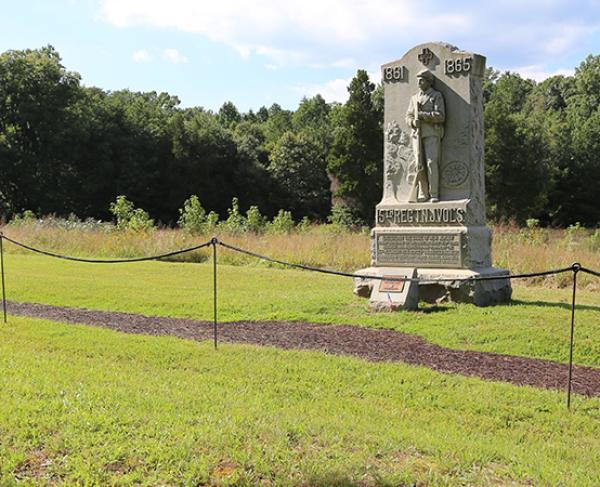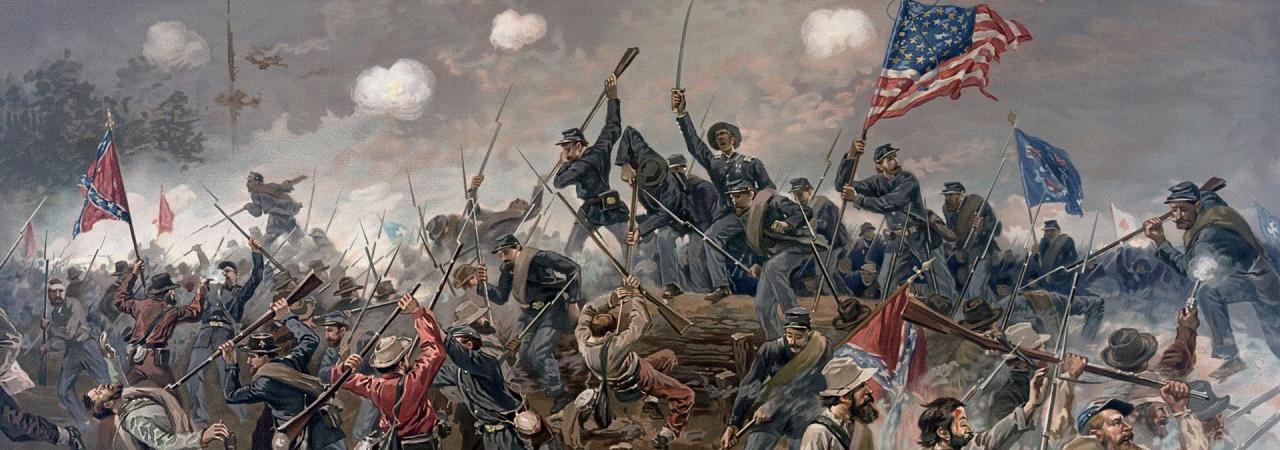
Battle of Spottsylvania [sic] by Thure de Thulstrup
Spotsylvania Court House
Spotsylvania
Spotsylvania County, VA | May 8 - 21, 1864
The inconclusive Battle of Spotsylvania Court House was the second major engagement in Lt. Gen. Ulysses S. Grant’s Overland Campaign, a major Union offensive to chase down Robert E. Lee, destroy his forces, and defeat the Confederacy.
How it ended
Inconclusive. The battle took place over 12 days and cost 18,000 Union and 12,000 Confederate casualties. Union troops tried repeatedly but failed to break the Confederate line. Grant ultimately disengaged from the fight and ordered his men to continue their march south.
In context
Spotsylvania Court House was the second engagement of the Overland Campaign, a series of battles fought in Virginia during May and June 1864. Lt. Gen. Ulysses S. Grant, general-in-chief of all Union armies, directed the Army of the Potomac, commanded by Maj. Gen. George Meade, against Confederate general Robert E. Lee’s Army of Northern Virginia. Grant’s objectives were to pursue Lee, cripple his army, and capture the Confederate capital of Richmond. Success relied on a relentless pursuit of the enemy, so Grant instructed Meade, "Wherever Lee goes, there you will go also."
Although the Union suffered severe losses during the campaign, it was a strategic victory for Grant. The battles inflicted proportionately higher casualties on Lee's army, driving his forces into a siege at Petersburg and eventually leading him to surrender his forces at Appomattox in April 1865.
On May 7, Lt. Gen. Ulysses S. Grant issues orders for the Army of the Potomac to march toward Spotsylvania Court House, a small village where the Brock Road meets the road to Fredericksburg. Grant hopes to get between Gen. Robert E. Lee's army and Richmond or, at the very least, to draw the Confederates into the open where he can take advantage of superior Union numbers. It is Confederate Gen. J.E.B. Stuart's job to prevent the Federals from reaching Spotsylvania. For two days, a division of Stuart's cavalry, led by Fitzhugh Lee, battles Union horsemen for control of the Brock Road. Forced to relinquish his position near Todd's Tavern, Lee withdraws to a rise of ground known as Laurel Hill, on the south side of the Brock Road, on May 8. Laurel Hill is the last defensible position north of Spotsylvania: if the Confederates lose the hill, they will also lose the crossroads at the courthouse.
Fortunately for Stuart and Fitzhugh Lee, Maj. Gen. Richard Anderson reaches Spotsylvania by the morning of May 8 and is within two miles of Laurel Hill. Anderson's corps is going into bivouac near the Po River when one of Stuart's couriers arrives to warn him of the Union army's approach. The new corps commander instantly puts his troops back on the road and leads them toward Laurel Hill.
May 8. Believing Spotsylvania to be within his grasp, Union Maj. Gen. Gouverneur K. Warren advances his Fifth Corps up to the hill where they are surprised to find Anderson's corps opposing them. Warren's attempts to drive back the Confederates are rebuffed with heavy losses and the two sides begin to entrench. During this fight, Maj. Gen. John Sedgwick, commander of the Union Sixth Corps, is shot dead, becoming the highest-ranking Union officer killed during the war.
May 9–10. Grant tries to break the deadlock at Spotsylvania over the next two days. On May 9, he sends a portion of Maj. Gen. Winfield S. Hancock's Second Corps across the Po River to find Lee's left flank. Spying Hancock's move, Lee shifts two divisions to counter the Federals at Block House Bridge, forcing the Yankees back across the river. Grant spends May 10 probing Lee's line for weaknesses, and nearly finds one, when a young colonel named Emory Upton briefly breaches the Confederate line with a tightly packed, fast-moving column of 12 regiments. Though Upton's assault is indecisive, it gives Grant an idea.
May 12. The Confederates have established a long line of earthworks, which includes a huge half-mile bulge, or salient, called the “mule shoe” because of its shape. Following up on Upton's attack, Grant masses 20,000 men of the Second Corps opposite the tip of the salient. Lee notes the Federal movement, but mistakenly believes that Grant is preparing to withdraw and removes his artillery from the area. So, when Hancock's men advance, on the morning of May 12, they strike the Confederate line where only infantry remain. After an initial breakthrough, Lee shifts reinforcements into the salient just as Grant hurls more troops at the Confederate works. Fighting devolves into a horrific, hand-to-hand, struggle—amid a torrential downpour. It lasts for 22 hours and claims roughly 17,000 casualties. The area is known thereafter as the Bloody Angle.
The stubborn stand by Confederates at the Bloody Angle gives Lee the time he needs to construct a new line of earthworks across the base of the salient. The Army of the Potomac, exhausted from its attacks, does not test the new line—at least, not right away. Instead, Grant slides his army to the left, followed by Lee sliding to his right. For three days, both sides consolidate their new lines.
May 18. Grant’s forces attack Lee’s new position early in the day and are met by massed artillery fire and easily repulsed. Stymied but undaunted, Grant calls off the attack.
May 19. Believing it best to continue moving his army to the southeast, Grant orders Hancock to pull back the Second Corps toward the Fredericksburg Road. Observing the movement, Lee sends Richard S. Ewell’s Second Corps forward as a reconnaissance force to determine where the Federals are going. Ewell’s men run into stiff resistance by a brigade of new heavy artillery-turned-infantry regiments at the Harris family farm.
May 20–21. In the evening, both sides pull out of their Spotsylvania defenses and move south and east toward the North Anna River.
18,399
12,687
The battle is tactically inconclusive, but both sides declare victory—the Confederacy because they are able to hold their defenses and the Union because they inflict severe losses on Lee's army. With a total of about 30,000 casualties, Spotsylvania is the costliest battle of the Overland Campaign. The carnage continues as the contest between Grant and Lee moves southeast to the North Anna River.
Wet weather, impenetrable fog, poor intelligence about the terrain and layout of the Confederate defenses, and a lack of coordination among corps commanders all hampered the Union effort to break the Confederate line at the perilous turn known as the Bloody Angle. The stubborn Confederate resistance and fresh troop reinforcements by Lee allowed for a prolonged fight with no victor.
Before the Union assault on May 12, 1864, Union corps commanders met to coordinate the attack, but little reconnaissance had been made and they had scant information about what they would actually find when they penetrated the Mule Shoe salient. Neither Grant nor Meade was directly involved in the details of the battle scheme. Union troops initially made some headway, but they were driven deep into the enemy line and hit with gunfire as Lee replenished his forces. Soon the confrontation degenerated into a man-to man struggle at close quarters. At a stalemate for 22 hours, the inconclusive fight resulted in the loss of 17,000 men, whose mangled bodies littered the trenches. G. Norton Galloway, a Union Soldier with the 95th Pennsylvania Regiment, survived the carnage and described the harrowing scene:
Unlike the standard infantry assault, which employed a wide battle line that stopped to fire and reload at will, Upton devised a scheme in which troops formed into groups of 12, three-by-four men across, and rushed a small part of the enemy position without pausing to trade fire. The goal was to overwhelm the defenders and break through their defenses.
Upton led twelve regiments in such an assault against the Confederate's Mule Shoe salient on May 10, 1864. His tactics worked and his command penetrated to the center of the V-shaped Mule Shoe, but they were left unsupported by other corps and forced to withdraw in the face of enemy artillery and mounting reinforcements. Still, Grant was so impressed with Upton, his men, and their success that he promoted Upton to brigadier general. Upton, who had graduated from West Point just as the Civil War began, was only in his early twenties during the battle of Spotsylvania Court House, but he was well on his way to earning a reputation as an accomplished military strategist. His ingenious attack on the Confederate breastworks foreshadowed tactics used in the trench warfare of World War I.
Spotsylvania Court House: Featured Resources
All battles of the Grant's Overland Campaign
Related Battles
100,000
52,000
18,399
12,687
